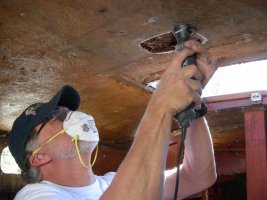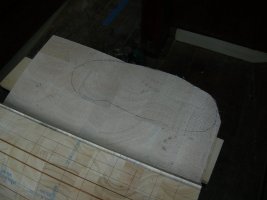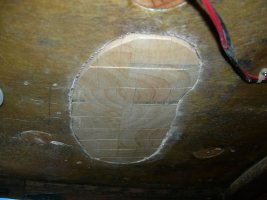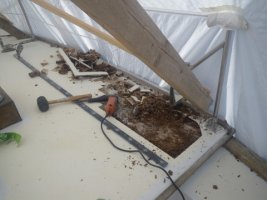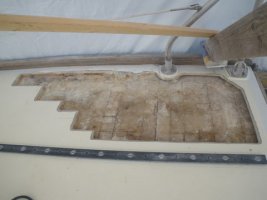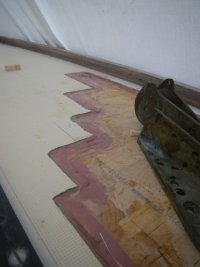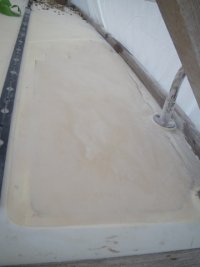I am about to start the recorring process on my 36C. I will try to lay out what I've done so far, and hope to solicit advise and comments from others that may have been down this road before. Any thoughts or constructive opinions are heartedly welcomed.
The first thing I did was remove the headliner from belowdecks. This gave me access to the bottom skin of the cabin top. I drilled several 'test cores' using a 2" hole saw and found sections that were very dry and sections that were very wet. I decided I needed a more scientific approach, so I drew a grid on a piece of paper and then took regular readings with a moisture meeter, recording the reading every 12". I then put the information into a spreadsheet and color coded each grid square, with blue being dry and red being wet, with gradients in between. This produced a great map of the wet areas on the cabin top.
I have also removed almost everything from the deck top, including jib tracks, blocks, and the dorade boxes. I think I'm pretty close to ready for the actual cutting of the fiberglass, and here is where advice is needed.
I have read that I should have at least 3" of fiberglass on each side of a cut to effectively feather in the patch after the new core is in place. My plan would then be to draw a line 3" away from the toe rail, hatches, and other borders and make my cut there. Does this make sense? Am I missing anything important?
More to come.
Joe
The first thing I did was remove the headliner from belowdecks. This gave me access to the bottom skin of the cabin top. I drilled several 'test cores' using a 2" hole saw and found sections that were very dry and sections that were very wet. I decided I needed a more scientific approach, so I drew a grid on a piece of paper and then took regular readings with a moisture meeter, recording the reading every 12". I then put the information into a spreadsheet and color coded each grid square, with blue being dry and red being wet, with gradients in between. This produced a great map of the wet areas on the cabin top.
I have also removed almost everything from the deck top, including jib tracks, blocks, and the dorade boxes. I think I'm pretty close to ready for the actual cutting of the fiberglass, and here is where advice is needed.
I have read that I should have at least 3" of fiberglass on each side of a cut to effectively feather in the patch after the new core is in place. My plan would then be to draw a line 3" away from the toe rail, hatches, and other borders and make my cut there. Does this make sense? Am I missing anything important?
More to come.
Joe


